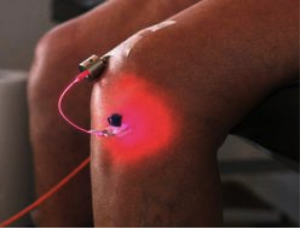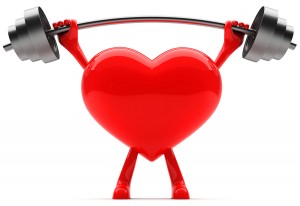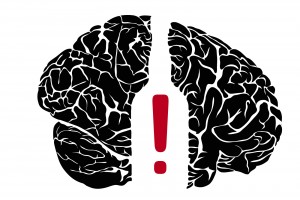This article is about the fact that obesity shortens life. Of all the factors that definitely shorten life, obesity stands out like a giant. Let’s review a couple of facts regarding obesity:
- Americans who were born between 1966 and 1985 became obese at a much earlier age than their parents
- Obesity occurs at a younger age than in the past. 20% of people born between 1966 and 1985 were obese in their 20s.
- The longer you are obese, the higher the chance of getting seriously sick or dying prematurely from complications of associated diseases like diabetes, heart attacks, strokes, kidney disease, liver disease and cancer.
- Severely obese people live up to 20 years less than non-overweight people.
- Obesity causes about 300,000 deaths in the U.S. annually
Change of metabolism
Obesity shortens life. Obesity leads to a change in metabolism, which is known as metabolic syndrome. The liver changes its metabolism slightly producing more triglycerides, LDL cholesterol and clotting factors, which increases the risk for heart attacks, strokes and pulmonary emboli. The pancreas produces more insulin, which gives rise to reactive hypoglycemia. This means that 2-3 hours after a meal you become hungry as your blood sugar declines from the extra insulin. You are craving a sugary drink, a donut or other starchy food (pizza, fries, bread etc.). Unfortunately, these types of foods reinforce the metabolic syndrome: the liver changes the sugar into LDL cholesterol and triglycerides.
Excess sugar oxidizes LDL cholesterol
Excess sugar will oxidize the LDL cholesterol, which causes atheromas (hardening of the arteries). Protein is being caramelized, which is called “advanced glycation end-products” or AGEs. This reference clearly explains how to counter this: increase your consumption of fish, legumes, vegetables, fruits, low-fat milk products and whole grains; also reduce your intake of solid fats, full-fat dairy products, fatty meats, and highly processed foods. There are other hormone changes that take place in obese people.
Death statistics due to obesity
In this study 849 autopsies were performed over 10 years, of which 32.3% were of obese persons. Leading causes of deaths in obese people were: malignancy (31.4%), infection (25.9%), ischemic heart disease (12.8%), pulmonary embolism (6.2%) and liver disease (2.9%). Table 2 of this link shows the causes of death in non-obese individuals as well: malignancy (32.5%), infection (23.8%), ischemic heart disease (10.4%), pulmonary embolism (2.9%) and liver disease (0.7%). The figures do not look all that different except that liver disease and pulmonary embolism are significantly more often the cause of death in obese patients than in normal weight patients. What you do not see in these figures is that obese people get these conditions at a much younger age as a result of complications from the associated diseases like diabetes, high blood pressure, cardiovascular disease, osteoarthritis, kidney disease and liver disease.
Diabetes
The metabolic changes with regard to the metabolic syndrome include insulin resistance.
As obesity worsens the balance is lost where the body can compensate and type 2 diabetes develops with increased blood sugar values and symptoms of diabetes. Surprisingly with regular exercise and changes in food intake (adopting a low glycemic index diet) this can be treated successfully. Usually this change is also associated with some weight loss, which helps to stabilize the metabolism. If nothing is done to to change diabetes, there is a high risk for heart attacks, strokes and subsequent secondary conditions like diabetic nephropathy, retinopathy, diabetic neuropathy and vascular complications.
Uncontrolled high blood pressure
High blood pressure is part of the metabolic syndrome. Unfortunately in obesity it is often difficult to control and may require several different antihypertensive medications in combination to control it. One way to quickly get the blood pressure under control is to make a concentrated effort to reduce a few pounds of weight; this can be achieved by cutting out refined carbs and sugar and starting an exercise program of walking and swimming.
Smoking
Smoking continues to remain a problem. Men as a group are now smoking less while women are increasing their smoking rates. Smoking causes various cancers, but also increases death rates from heart disease and strokes. In connection with obesity it is clear that the obese smoker has the highest risk of dying prematurely. This is depicted in this link based on the original Framingham study.
Disabilities and nursing homes
Obese people get disabled earlier, ending up in nursing homes. This poses a huge problem there for the staff. Back injuries and disabilities in the caregivers of nursing homes have increased significantly in the last few decades.
Osteoarthritis
80% of hip replacements and 90% of knee replacements are due to osteoarthritis. Obesity is the strongest modifiable risk factor that leads to osteoarthritis and subsequent surgery. There is a lot of morbidity and mortality associated with total knee and total hip surgeries. Part of this is the susceptibility to clot formation from the changes in metabolism associated with the metabolic syndrome. This often leads to pulmonary emboli and higher death rates following surgery when compared to surgery in people with normal weight.
Heart attacks and strokes
As there is an increase of the amount of heart attacks and strokes in overweight and obese people it is important to reduce your BMI when you realize that it is creeping up. Regular exercise along with a Mediterranean diet helps to improve this. Avoid processed foods that often have hidden sugar and refined carbs in them. Also cut out sugar. Use stevia, a natural sweetener, if you want to sweeten your food or drinks.
Nonalcoholic fatty liver disease (NAFLD)
In the past nonalcoholic fatty liver disease was rare. Now with the increase of obesity it is common. It can lead to liver cirrhosis with hepatic failure, a common cause of death. But after several years of liver cirrhosis, liver cancer may develop within the cirrhotic liver. Physicians saw this condition only rarely in decades past.
Obesity shortens life: Kidney disease
With obesity there is a negative effect on the kidneys from the metabolic syndrome. Hyperinsulinism affects the capillaries of the filtration units, called glomeruli. They start to proliferate and undergo a form of degenerative change, called glomerulosclerosis. This decreases the filtration capacity of the glomeruli and the kidneys as a whole. After a few decades of this process kidney failure can set in. When an obese person develops diabetes, this will also have a negative effect on kidney function and accelerate the deterioration of kidney function. The end result is kidney failure, which requires dialysis or a kidney transplant.
Cancer and obesity
Obesity shortens life. Chronic inflammation that is worsened by the metabolic syndrome leads to higher rates of various cancers. A prospective study of more than 900,000 US adults was conducted for 16 years. In 1982 when the study was started none of the participants had cancer. After 16 years 57,145 of the study participants had died of cancer. Those in this study who had a BMI of 40.0 or more had cancer death rates that were 52% higher for males and 62% higher for females when compared to normal weight men and women.
Higher cancer rates in people with obesity
It was noticeable that the digestive tract showed higher cancer rates in the obese: esophagus, liver, gallbladder, pancreas, colon and rectum; other more frequent cancers were kidney cancer, multiple myeloma and non-Hodgkin’s lymphoma. There were also trends of higher cancer death rates with regard to cancer of the stomach and prostate in men and breast cancer, uterine cancer, ovarian and cervical cancer in women. The authors concluded that due to the rising obesity rates in the US population cancer rates in men will soon reach the 14% level and in women the 20% level out of the total death rates.
Treating obesity
Treatment of obesity requires a multifaceted approach. I have discussed this in detail in this blog. Briefly, the diet of the obese person needs to be closely looked at. Sugar and starchy foods need to be eliminated. Low glycemic foods like vegetables, lean meat and salads should be encouraged. A regular exercise program needs to be instituted, starting with swimming and walking. Later a gradual transition into gym type activities could be contemplated.
Weight loss surgery has been successfully applied in some obese patients with a BMI that is greater than 30.0 up to a BMI of 39.9. In a 5-year follow up after LAP-band surgery no surgical complications were reported and the mean percentage weight loss was 15.9±12.4%.
Conclusion
Obesity shortens life. Obesity is a condition that has been gradually developing since the 1980’s. When you look at the food intake changes rationally it is not surprising that this is happening. Sugar consumption, high-fructose corn syrup consumption and the consumption of processed food have to be cut down, if not cut out completely. You can forget shopping at the middle section of any grocery store, where all that processed food is located. Go to the vegetable section and buy a lot of food from there. Low fat dairy products, eggs, and low-fat meats as well as salmon and other seafood are foods that are healthy. There is one problem though and that is the feeding of antibiotics to chickens, turkeys and beef cattle. This leads to superbugs and changes your gut flora.
Eat organic foods
I suggest you buy organic meats. I eat organic food and have cut out wheat also as wheat underwent forced hybridization in the 1970’s. All of the wheat in the world now is this type of wheat that is too rich in gliadin, which causes leaky gut syndrome and autoimmune diseases. For this reason, I avoid all wheat.
Gradually shed your pounds
I see no reason why obese people could not gradually shed their pounds and regain their stable metabolism. Those with diabetes will be able to shed that diagnosis as they shed their pounds. The kidney and liver function will also stabilize when you shed enough pounds. The goal should first be to reach a BMI of 25.0 to 30.0, which is the overweight category. The next goal would be to aim for shedding even more pounds until you reach a BMI of fewer than 25.0. If you say this is too tough to do, I am saying: giving up is not an option. Cherish your health!















